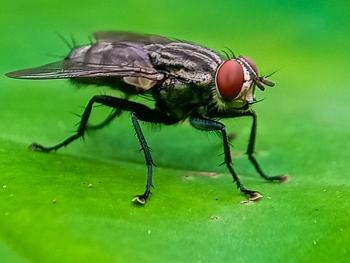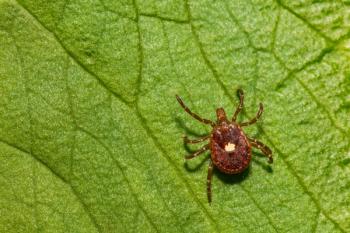
States brace for new Lyme disease threats from increasing tick populations
National Report - Populations of Ixodes scapularis, or black-legged ticks-a carrier of Lyme disease-have been historically scarce in states like Ohio, Michigan and Indiana.
NATIONAL REPORT — Populations of Ixodes scapularis (black-legged ticks), a carrier of Lyme disease, have been historically scarce in states like Indiana, Michigan and Ohio. But new passive surveillance data shows that these tick populations are growing.
From 1989 to 2008, just 35 black-legged ticks were confirmed in Ohio. In 2010, the number jumped to 45. This year, 184 black-legged ticks were collected by passive surveillance. And that has triggered the public health alarm about the potential threat of Lyme disease in these areas.
"Ohio has a good habitat for tick populations," explains Dr. Richard Gary, state public health entomologist with the Ohio Department of Health. "We just weren't seeing black-legged ticks. Were they here? Probably. But we never found evidence of a good population of these ticks."
Now they have, and not just through passive surveillance. State health officials have partnered with the Ohio Department of Natural Resources and the Ohio Department of Agriculture to check deer heads during hunting season. In prior years, numerous ticks were found, but not black-legged ticks. For example, during three years of checks, just one black-legged tick was discovered. In 2010, that number increased to 29.
The findings in 2011 were "really concerning," Gary says. Officials identified 1,833 black-legged ticks on deer heads.
"There is no doubt in any of our minds that this represents a dramatic increase," Gary says.
What caused the increase remains a mystery in Ohio, as well as Michigan, which also had been relatively free of Ixodes scapularis, until recently.
A 1998 study in Michigan showed the presence of black-legged ticks in the state's Upper Peninsula with a smattering across the lower half of the state. Further research was able to predict that the population would spread up the coast to the north, which it has done, according to Dr. Jean Tsao, associate professor at Michigan State University in the Department of Large Animal Clinical Sciences and the Department of Fisheries and Wildlife.
Tsao is part of a multi-university research collaboration trying to understand the invasion of the black-legged ticks and the role that deer and birds play in their proliferation.
"Because we were lucky, we didn't have to worry about the black-legged tick if you weren't in one of those western counties," Tsao says. "That's no longer the case. Veterinarians and public health people need to be aware."
Ohio officials also are working with veterinarians.
"What we are trying to do is work with local health departments, health centers, doctors and veterinarians to educate them on the presence of this tick," Gary says. "We didn't have this tick, which causes Lyme disease, in Ohio before, but it's here now. We want people to be aware because it is so different from the ticks we do have."
And veterinarians are on the front lines with ticks moving into the state, according to Glen Needham, associate professor of entomology at The Ohio State University.
"Animals are probably in harm's way more than people because they go into the woods where the tick is found and bring it back," Needham says. "While there hasn't been an increase of ticks on humans, it's not reportable with animals."
So veterinarians are likely to encounter these poppy seed-sized ticks before medical doctors.
"I'm really impressed with (veterinarians)," Needham says. "They are really interested and want to know all they can. The [physician] community is not as interested right now."
Education is definitely necessary, adds Dr. Graham Hickling, research associate professor at the University of Tennessee Institute of Agriculture in Knoxville. He is collaborating with Tsao on the subject.
"Certainly in the last few decades, the black-legged tick has spread aggressively into new areas," Hickling says. "The common explanation, or the one I believe to be true, is that 15,000 years ago as the glaciers retreated, refugee ticks stayed behind in Connecticut and Wisconsin. Now, it seems like ticks around those centers of origin are coming out."
Since Ohio is halfway between those two states, it makes sense that Ohio is the last to be invaded, Hickling says.
While only halfway through the four-year study, education will remain an important part of the project as it draws to a close, he says.
Newsletter
From exam room tips to practice management insights, get trusted veterinary news delivered straight to your inbox—subscribe to dvm360.



